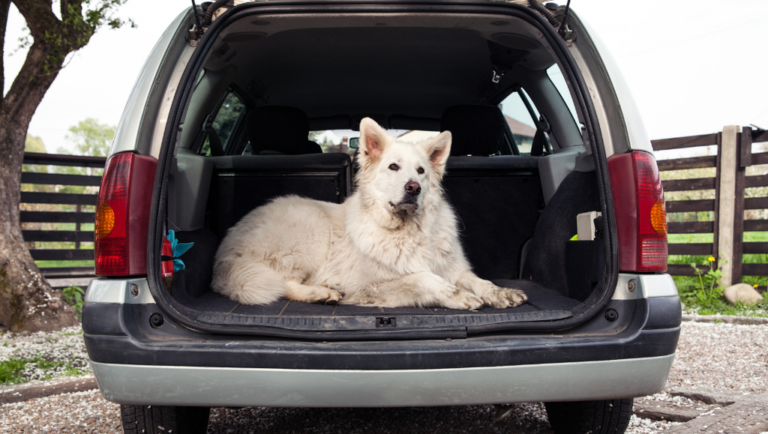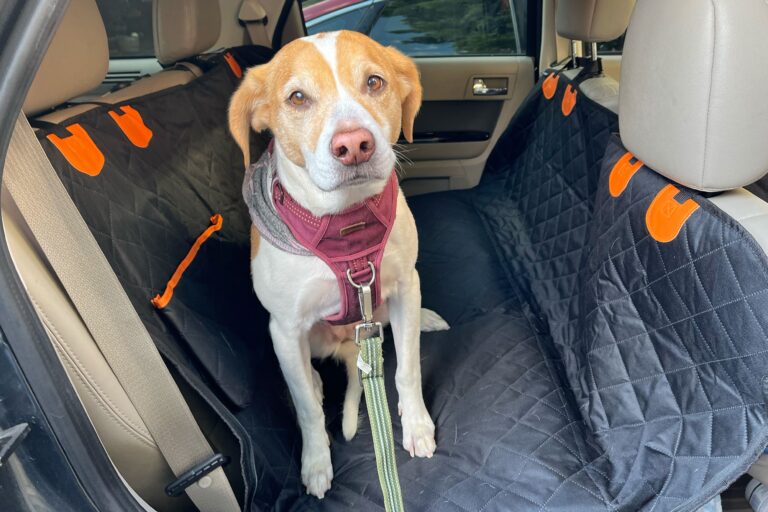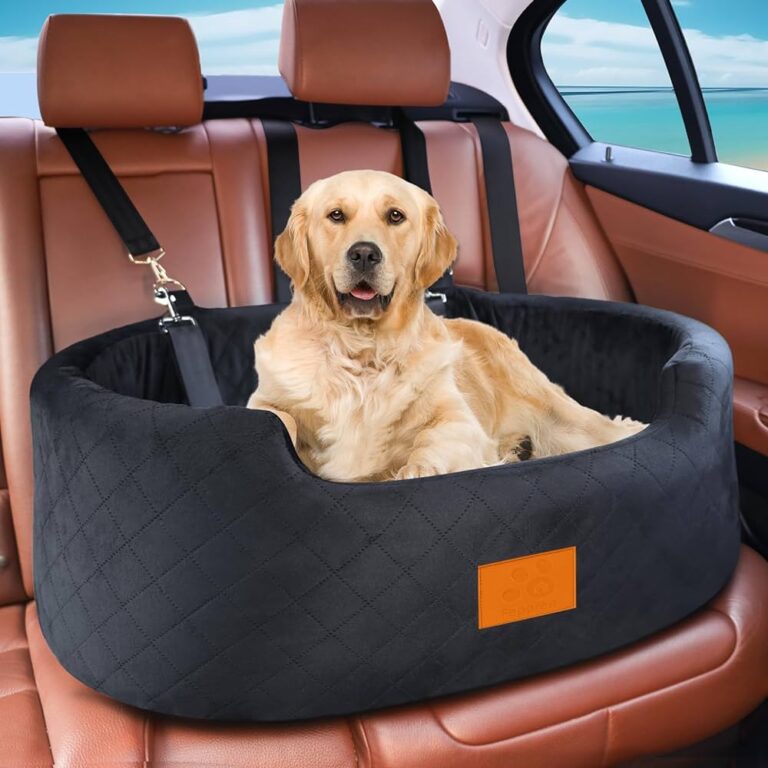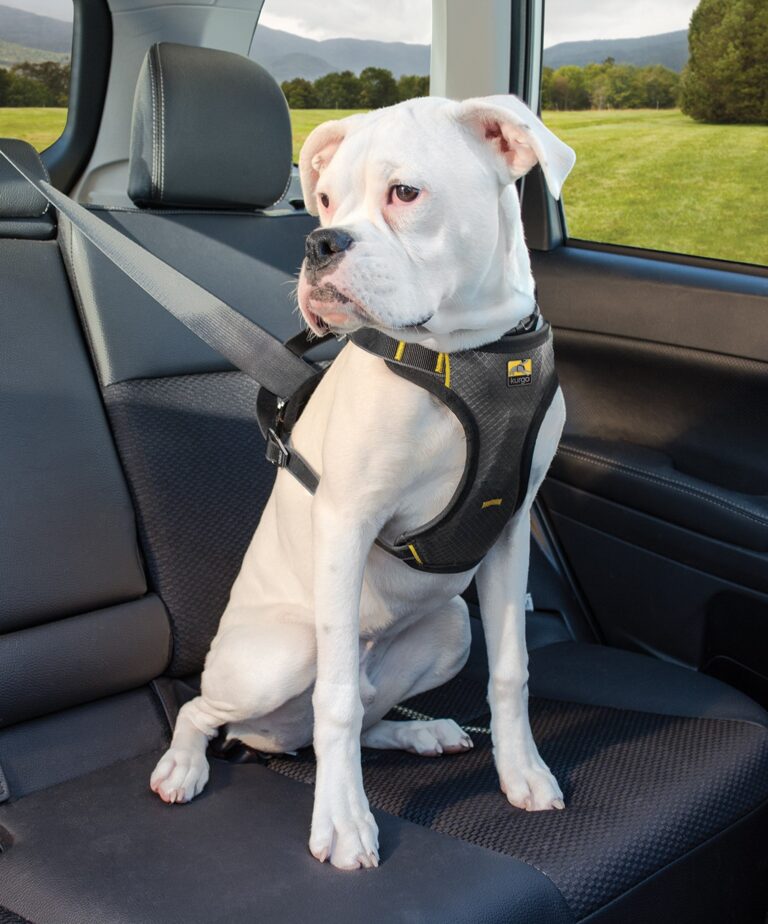Can a Dog Sit in the Backseat? Safety & Tips Unleashed
Yes, a dog can sit in the backseat of a car. Ensure the dog is secured for safety.
Traveling with a dog can be enjoyable and stress-free. Properly securing your dog in the backseat ensures their safety and comfort. Use a dog seatbelt, harness, or a pet carrier designed for car travel. These tools prevent distractions and reduce the risk of injury during sudden stops.
Make sure the backseat area is free from loose objects that could harm your pet. Regular breaks for water and stretching help keep your dog comfortable on longer trips. Always prioritize your pet’s well-being and follow local laws regarding pet travel. Safe and secure travel makes the journey pleasant for both you and your furry friend.
The Debate: Backseat Vs Front Seat For Dogs
Many pet owners wonder: Should my dog sit in the backseat or the front seat? Both options come with their own set of considerations. Safety is the most important factor. Let’s dive into the key points of this ongoing debate.
Safety Concerns With Front Seat Travel
The front seat might seem convenient. But, it poses significant safety risks for dogs. Here’s why:
- Airbags: Airbags can injure or even kill dogs. They deploy with great force.
- Distractions: Dogs in the front seat can distract the driver. This increases the risk of accidents.
- Accidents: In a crash, a dog in the front seat is more vulnerable. They can be thrown forward.
Advantages Of Backseat Positioning
Placing your dog in the backseat offers several benefits. It is generally a safer choice for travel.
| Advantages | Details |
|---|---|
| Less Distraction | The driver can focus better. A dog in the backseat won’t interfere. |
| Reduced Injury Risk | In case of a crash, the backseat is safer. Dogs are less likely to be thrown. |
| Use of Restraints | Dog seat belts or crates can be used. These keep the dog secure. |
In the end, the backseat is the safer and more practical option for your dog’s travel. Always prioritize their safety and comfort.
:strip_icc()/sps-dog-seats-cover-test-urpower-dana-ingemann-04-611b60eecebb4be8a11e5b80dbdc8328.jpg)
Credit: www.thesprucepets.com
Legal Requirements For Dog Transportation
Ensuring your dog sits safely in the backseat is crucial. Legal requirements vary by state. It’s important to understand these laws to avoid penalties. This section will cover state-specific laws and the penalties for non-compliance.
State-specific Laws And Regulations
Different states have different rules for transporting dogs in vehicles. Here are some examples:
| State | Regulation |
|---|---|
| California | Dogs must be restrained in a crate or harness. |
| New Jersey | Unrestrained pets can lead to fines and animal cruelty charges. |
| Hawaii | Dogs cannot sit on the driver’s lap. |
| Maine | Dogs must be secured or placed in a crate. |
Always check your state’s specific laws before traveling with your dog. This ensures compliance and safety.
Penalties For Non-compliance
Failing to follow dog transportation laws can lead to serious penalties. Here are some examples of penalties:
- Fines: Many states impose fines for unrestrained dogs. These fines can range from $50 to $200.
- Points on License: In some states, drivers can receive points on their license. This affects insurance rates and can lead to license suspension.
- Animal Cruelty Charges: Severe cases can result in animal cruelty charges. This can lead to higher fines and even jail time.
- Vehicle Accidents: Unrestrained dogs can cause distractions. This increases the risk of accidents, resulting in higher penalties.
Ensuring your dog is properly restrained helps avoid these penalties and keeps everyone safe.
Understanding Dog Behavior In Cars
Dogs can exhibit various behaviors during car rides. Understanding these behaviors helps ensure a safe and pleasant journey for both you and your pet. Each dog reacts differently to car travel, and knowing these reactions can make a significant difference.
Stress Indicators In Dogs During Car Rides
Not all dogs enjoy car rides. Some dogs show signs of stress. Recognizing these signs is crucial.
- Panting: Excessive panting can be a sign of stress.
- Whining: Dogs may whine if they are anxious.
- Drooling: Increased drooling can indicate discomfort.
- Yawning: Frequent yawning can be a stress signal.
- Licking Lips: Dogs may lick their lips when they are nervous.
How Car Travel Can Affect Your Dog’s Behavior
Car travel can impact your dog in several ways. Some dogs may become excited, while others may become fearful.
Here are some potential effects of car travel on your dog:
| Effect | Description |
|---|---|
| Excitement | Some dogs associate car rides with fun activities. |
| Anxiety | Other dogs may feel anxious or scared during car rides. |
| Motion Sickness | Dogs can experience motion sickness, leading to vomiting. |
| Behavioral Changes | Prolonged car travel can lead to changes in behavior. |
Understanding your dog’s behavior during car travel ensures a better experience for everyone. Always monitor your dog’s reactions and adjust accordingly.
Securing Your Dog In The Backseat
Many dog owners love taking their furry friends on car rides. It’s essential to ensure their safety during the trip. Securing your dog in the backseat prevents accidents and keeps both the dog and passengers safe. Here are some guidelines to help you secure your dog correctly.
Types Of Dog Restraints And Harnesses
Using the right restraint or harness can make a big difference in safety. Here are some popular options:
- Dog Seat Belts: These attach to your car’s existing seat belt system. They are easy to use and provide good security.
- Harnesses: A harness can distribute force across your dog’s body. This reduces injury risk in case of sudden stops.
- Dog Car Seats: These are like small beds that attach to the car seat. They offer comfort and safety.
- Barriers: Barriers keep your dog in the backseat area. They are ideal for larger dogs.
Installation Tips For Maximum Safety
Proper installation is crucial for your dog’s safety. Follow these tips to ensure maximum security:
- Read Instructions: Always read the manufacturer’s instructions before installation. Each restraint or harness might have unique steps.
- Check Fit: Ensure the restraint fits your dog snugly. A loose fit can reduce its effectiveness.
- Secure Anchor Points: Use the car’s anchor points to attach the restraint. This provides a stable and secure base.
- Test Stability: Once installed, gently pull on the restraint to test its stability. It should remain firmly in place.
- Regular Checks: Regularly check the restraint for wear and tear. Replace it if you notice any damage.
Ensuring your dog is secure in the backseat is vital for a safe journey. Follow these tips to make every ride enjoyable and safe for your furry friend.
Backseat Safety Equipment
Ensuring your dog’s safety in the backseat is crucial. Backseat safety equipment helps protect your furry friend during car rides. This equipment keeps your dog secure and comfortable. Let’s explore some of the essential backseat safety gear.
Crash-tested Dog Car Seats
Crash-tested dog car seats are vital for safety. These seats keep your dog secure during sudden stops. They have been tested to ensure they can protect your dog in an accident.
Here are some features of crash-tested dog car seats:
- Durable materials: Strong and long-lasting fabrics.
- Harness attachments: Keeps your dog safely strapped in.
- Comfortable padding: Provides a cozy spot for your dog.
Using a crash-tested car seat can give you peace of mind. It ensures your dog is safe on every journey.
Protective Barriers And Seat Covers
Protective barriers are another great safety option. These barriers prevent your dog from jumping into the front seat. They help keep both the driver and the dog safe.
Seat covers protect your car’s interior from dirt and damage. They are easy to clean and provide a comfortable surface for your dog. Some seat covers have added padding for extra comfort.
Here are some benefits of using protective barriers and seat covers:
- Keeps your dog in the backseat: Prevents distractions while driving.
- Protects your car: Keeps seats clean and free from scratches.
- Easy to install and remove: Most covers and barriers are user-friendly.
Investing in backseat safety equipment is a smart choice. It keeps your dog safe and ensures a pleasant travel experience for everyone.
)
Credit: www.orvis.com
Training Your Dog For Backseat Riding
Having your dog sit in the backseat can be fun and safe. Training your dog to ride in the backseat is important for safety. Let’s explore the key steps to make this process smooth and enjoyable for both you and your furry friend.
Introducing Your Dog To The Backseat
Start by making the backseat a welcoming place. Spread a comfortable blanket or dog bed on the seat. Let your dog explore the backseat on their own. Use treats to encourage them to jump up and sit.
| Step | Description |
|---|---|
| 1 | Place a blanket or bed on the backseat. |
| 2 | Allow your dog to explore the backseat. |
| 3 | Use treats to encourage your dog to sit in the backseat. |
Positive Reinforcement Techniques
Use positive reinforcement to train your dog. Give them treats and praise when they sit calmly in the backseat. Repeat this process several times. Consistency is key to successful training.
- Use treats to reward good behavior.
- Praise your dog with kind words.
- Repeat the process to build a habit.
Short training sessions work best. Aim for 5-10 minutes each time. Gradually increase the time your dog spends in the backseat.
With patience and practice, your dog will enjoy backseat rides. Make sure to always use a dog seat belt or harness for safety.
Emergency Procedures And First Aid
Traveling with your dog in the backseat can be a delightful experience. But it’s crucial to be prepared for emergencies. Knowing how to handle distress and having a first aid kit can make a significant difference.
Recognizing Signs Of Distress
Dogs may show signs of distress in various ways. Panting excessively or whimpering can indicate discomfort. Drooling more than usual or restlessness are also signs. Look for vomiting or diarrhea, which may signal motion sickness.
Another critical sign is lethargy. If your dog is unusually sleepy or unresponsive, this could be a serious issue. Always monitor changes in behavior. If your dog seems off, it’s time to take action.
Emergency Kit Essentials For Your Dog
Having an emergency kit for your dog is essential. Here’s a list of items to include:
- First aid manual for pets
- Bandages and gauze
- Antiseptic wipes
- Tweezers for removing splinters or ticks
- Digital thermometer
- Hydrogen peroxide (3%)
- Medical tape
- Non-stick bandages
- Saline solution
Keep these items in a durable, waterproof bag. Make sure it’s easily accessible during travel.
Emergency contact numbers are also vital. Include your veterinarian’s number and a 24-hour emergency clinic. Keep a copy of your dog’s medical records in the kit. This can be crucial in an emergency.
Having a muzzle can be helpful. Even the gentlest dog can bite when in pain or scared. A blanket can offer comfort and warmth.
Water and a collapsible bowl should always be part of your kit. Dehydration can worsen a dog’s condition quickly.
Lastly, include medications your dog regularly takes. Missing a dose can lead to complications.
By recognizing signs of distress and having an emergency kit, you ensure your dog’s safety. Preparedness can prevent minor issues from becoming major problems.
Travel Tips For A Smooth Ride
Traveling with your dog can be a joyful experience. To ensure a smooth ride, you need to take some important steps. These tips will help make your journey comfortable for both you and your furry friend.
Dealing With Motion Sickness
Some dogs experience motion sickness during car rides. This can make travel stressful for them. To help your dog, try these tips:
- Feed your dog a light meal a few hours before the trip.
- Keep the car cool and well-ventilated.
- Take breaks every two hours for fresh air and a short walk.
- Use a crate or dog seatbelt for safety and stability.
If your dog still feels sick, you can ask your vet for medications. These can help reduce nausea and make the ride more pleasant.
Ensuring Comfort On Long Trips
Long trips can be hard on your dog. It’s important to keep them comfortable and happy. Here are some tips to ensure comfort:
- Bring Familiar Items: Pack their favorite blanket or toy. These items can provide comfort.
- Regular Breaks: Stop every two hours for a break. Let your dog stretch and relieve themselves.
- Stay Hydrated: Always have fresh water available. Offer it during breaks to keep your dog hydrated.
- Comfortable Seating: Use a dog seat cover or a travel bed. This will provide a cozy spot for your dog to rest.
| Comfort Tip | Description |
|---|---|
| Bring Familiar Items | Pack their favorite blanket or toy for comfort. |
| Regular Breaks | Stop every two hours for stretching and relieving. |
| Stay Hydrated | Offer fresh water during breaks to keep them hydrated. |
| Comfortable Seating | Use a dog seat cover or travel bed for a cozy rest spot. |
By following these tips, you can make long trips enjoyable for your dog. A happy dog means a stress-free journey for you.
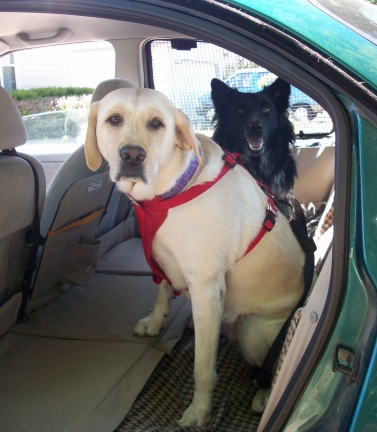
Credit: ontariospca.ca
Frequently Asked Questions
Can My Dog Sit In The Back Seat?
Yes, your dog can sit in the back seat. Use a pet seat belt or carrier for safety. Ensure your dog is comfortable.
Should Dogs Ride In The Back Seat?
Yes, dogs should ride in the back seat. Use a pet seatbelt or carrier for safety. This prevents distractions and injuries.
Can My Dog Sit In The Passenger Seat?
Yes, your dog can sit in the passenger seat. Ensure they are secured with a pet seat belt or harness for safety.
In What States Is It Illegal To Have An Unrestrained Dog In A Car?
Several states, including New Jersey, Rhode Island, and Hawaii, have laws against unrestrained dogs in cars. Ensure pet safety.
Conclusion
Ensuring your dog sits safely in the backseat enhances travel comfort and security. Use appropriate restraints or a pet seatbelt. This prevents distractions and keeps your furry friend safe. Regular breaks and proper ventilation make trips enjoyable. Prioritize your dog’s safety for happy and stress-free journeys.
- Can I Get in a Taxi Without a Car Seat? - January 26, 2025
- Can I Get Chlamydia From a Toilet Seat? - January 26, 2025
- Can I Get an Uber With a Car Seat? - January 26, 2025


